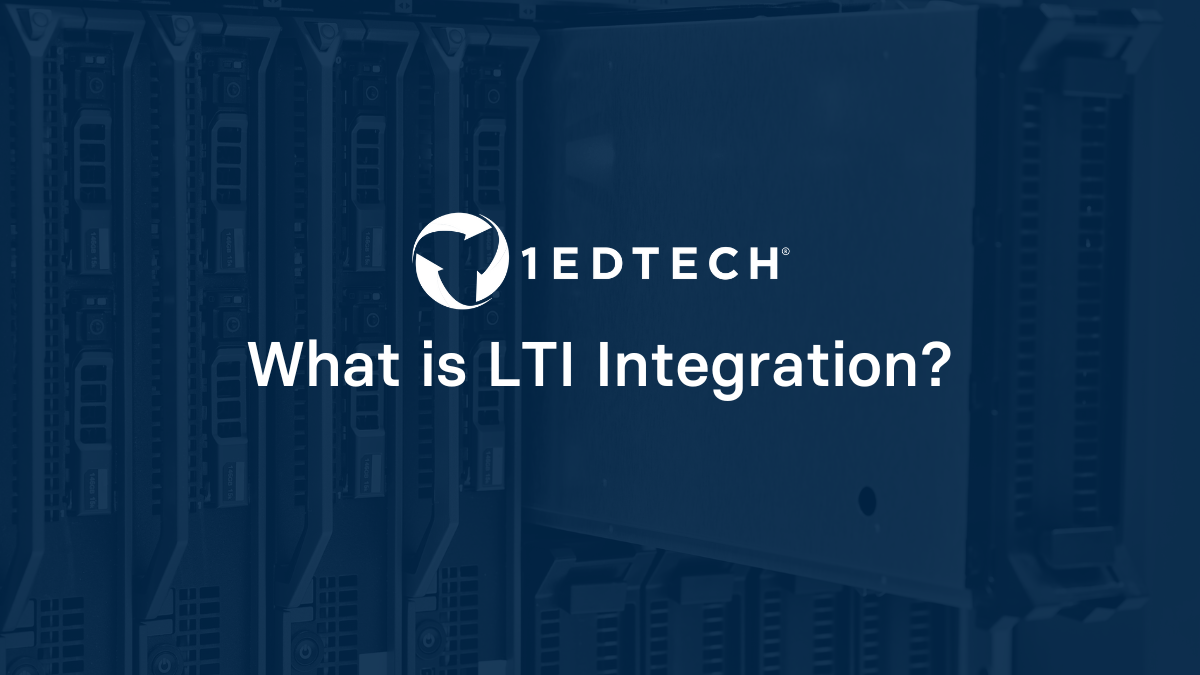What Does LTI Stand For?
LTI stands for Learning Tools Interoperability. It refers to a framework that enables third-party tools to launch from, communicate with, and pass data back to an LMS, depending on the version.
Why Interoperability Matters
In education technology, interoperability means the ability of systems to exchange and make use of information regardless of how those systems are built. There are a few paths to becoming interoperable, such as through APIs or data standards.
LTI is one such path. It offers a standards-based approach that can reduce the need for custom development between learning tools (read: other edtech products) and LMS providers. Ideally, tools that implement LTI can sync data from an LMS by following a shared protocol to exchange data like user info, course enrollment, assignments, and grades. This can streamline integration in cases where data was not easily exchanged between these systems before. In doing so, the learning tool becomes more effective in delivering data-rich experiences for its end-users.
Who Uses LTI?
LTI is widely adopted across K12, higher education, and workforce learning. Popular LMS providers like Canvas, Blackboard, Moodle, Brightspace, and Schoology support LTI. Publishers, curriculum developers, and other edtech companies might use LTI to embed their tools within these LMS providers for interoperability.
How LTI Works
LTI works by establishing trust between an LMS (the platform) and a third-party tool (the tool provider). Here's the basic flow:
- A teacher or student clicks a link in the platform.
- The platform initiates a connection to the external tool provider by generating and sending a launch message using the LTI protocol.
- The tool provider receives the launch request and returns the appropriate content.
This process is what enables the external tool to open within the platform’s environment (as an iframe). If supported, the platform and tool provider can exchange several different types of data, like grades, user info, or content updates.
Newer versions of LTI, like LTI 1.3, use modern protocols including OAuth2, OpenID Connect, and signed JSON Web Tokens (JWTs).
What Is LTI 1.3 and LTI Advantage?
LTI 1.3 is the latest core version of the LTI specification; more details on that here.
LTI Advantage builds on LTI 1.3 with three optional services:
- Names and Role Provisioning Service (NRPS): Shares class roster and user roles with the tool.
- Assignment and Grade Services (AGS): Lets tools return scores and feedback to the LMS gradebook.
- Deep Linking: Allows teachers to configure content within a tool and add links directly to course pages.
Some tools only need one service, while others aim for LTI Advantage Complete (all three services).
What Are Public Resources for LTI?
1EdTech has published some resources for LTI development and certification. These include:
- FAQs and technical documentation on the LTI standard
- Sample tools and launch validators (gated by their membership wall)
- Certification guidelines for platforms and tool providers (gated by their membership wall)
The Future of LTI
LTI 1.3 and LTI Advantage are designed to evolve independently. Ideally, this allows for faster updates and new services without breaking existing functionality. As more use cases pop up and needs change, ideally, more services will be added.
*Updated | 7-25-25
Read More on Data Standards
Here are other resources on Data Standards and Edlink to help you on your integration journey:
- What’s the difference Between API and LTI Integration
- The History of LTI
- Introducing Edlink
- Our Mission at Edlink
- What is the Edlink Unified API?
Want to Get Started?
If you're looking for a partner to guide you through developing integrations, then let us introduce ourselves. We're Edlink!

